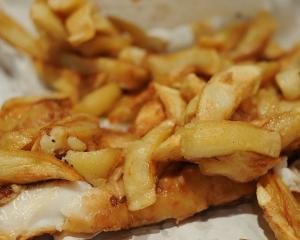Espresso Garden Cafe, at Mitre 10 Mega in South Dunedin, started serving "sweet bites", smaller versions of the cafe's slices and biscuits, about a year ago.
Manager Shona Miller said the change came from "listening to what people were saying".
"People were coming in at morning tea and saying, 'I'd like something, but I just want something small'."
While admitting the cafe's portions were "quite big" and that baking in general could "sometimes" be too big, she believed it often came down to people thinking about value for money.
University of Otago department of human nutrition Associate Prof Winsome Parnell challenged other cafes to also offer smaller portions of baking.
"I like a little bit of a treat at the end of my lunch, but small, and I get very frustrated with the size of sweet treats," she said.
To combat the large size of sweet items in cafes, she either avoided them, or split them with friends and family.
"What I don't get is why cafes don't notice that. I think it would be fun if cafes got brave and did the small size to see how it went."
Large biscuits, slices and muffins had been "ubiquitous" for "several years", but Dr Parnell did not think they were needed.
"I think it encourages you to eat more energy than you actually need and it has the potential to displace healthier foods."
She believed a better size would reflect "what mum used to make".
Heart Foundation national nutrition adviser Delvina Gorton agreed, saying current food portion sizes were a "big problem".
"If you think about the portion sizes that we used to get when we were kids, they're now a lot bigger and that bigger size now seems normal, so we're eating more without even realising it," she said.
A large muffin or slice could contain the calories of a whole meal (2000kJ), but was usually eaten as a snack or after a meal.
"Most of us need to watch where our calories are coming from, and big sizes of treat foods aren't helpful.
They really need to be thought of as a treat food to be eaten occasionally and enjoyed in small amounts.
"But having said this, it's really the companies making the food who need to play their part and start providing reasonable-sized portions as the default option."
Jenny Craig dietitian Karen Inge said the size of cakes and scones had doubled from 40g to 80g over the past 25 years.
In some instances, portions were two to five times larger than when they first became commercially available, she said.
"The dramatic increases appear to have started in the 1980s and parallel the rising rates of obesity.
Bigger portions encourage overeating."
Cilantro Cafe owner Jared Gee said he reduced the size of the cafe's slices when he bought the business in 2010, as they were "too big" for what a customer would expect or enjoy.
"I'm a firm believer of correct quantities on a plate," he said.
If slices were too big, customers would buy only one to share and he preferred to offer quality over quantity.
While the cafe was still told it had "big slices", if "you cut them down too much, customers notice".
Sweet treat
- A serve is equivalent to two plain biscuits such as a SuperWine: Ministry of Health food and nutrition guidelines.
- Should be no more than 400kJ per serve (equal to about 10 jelly beans, 21 M&Ms, or fun-size Mars Bar or Kit Kat): Jenny Craig











